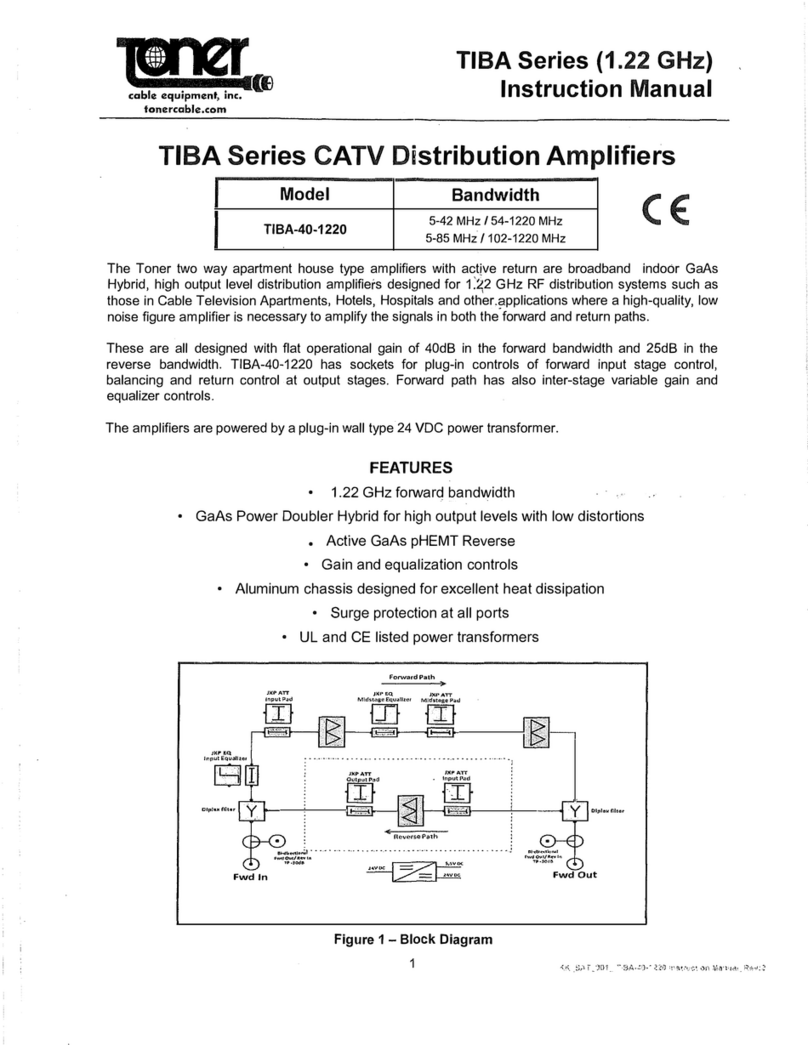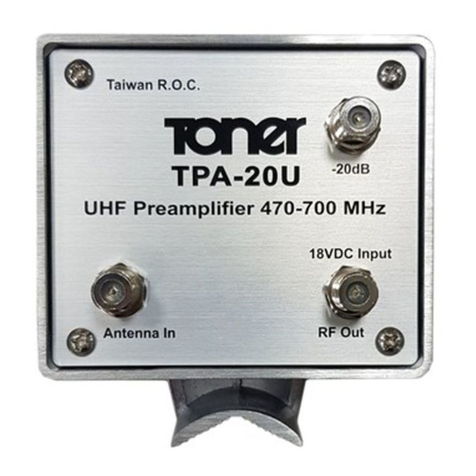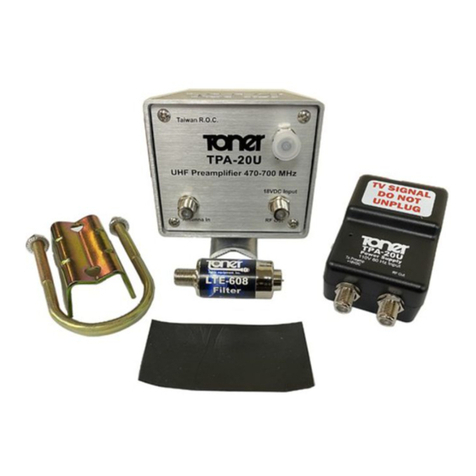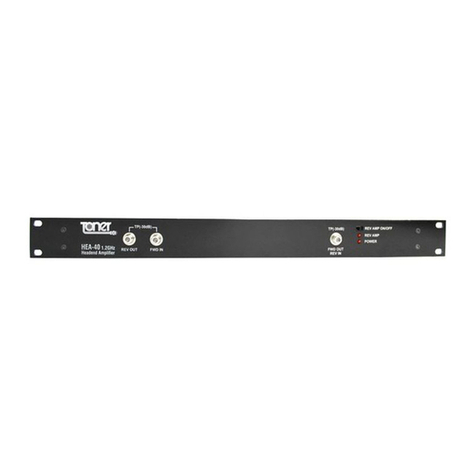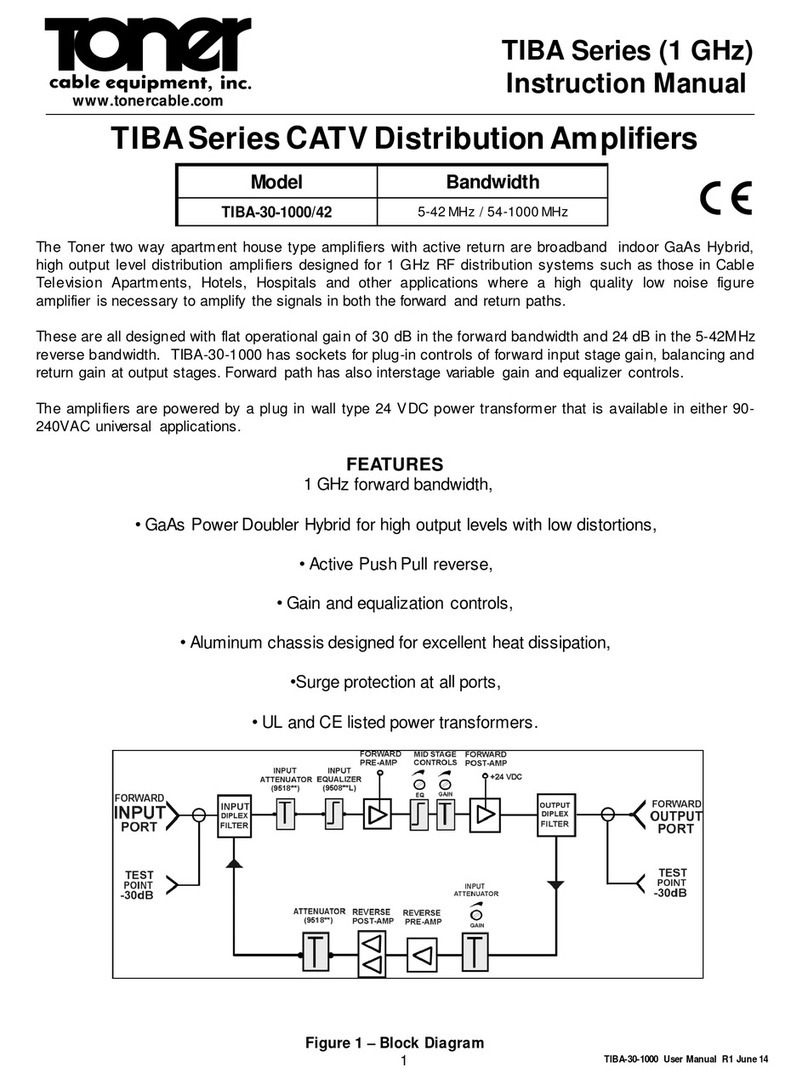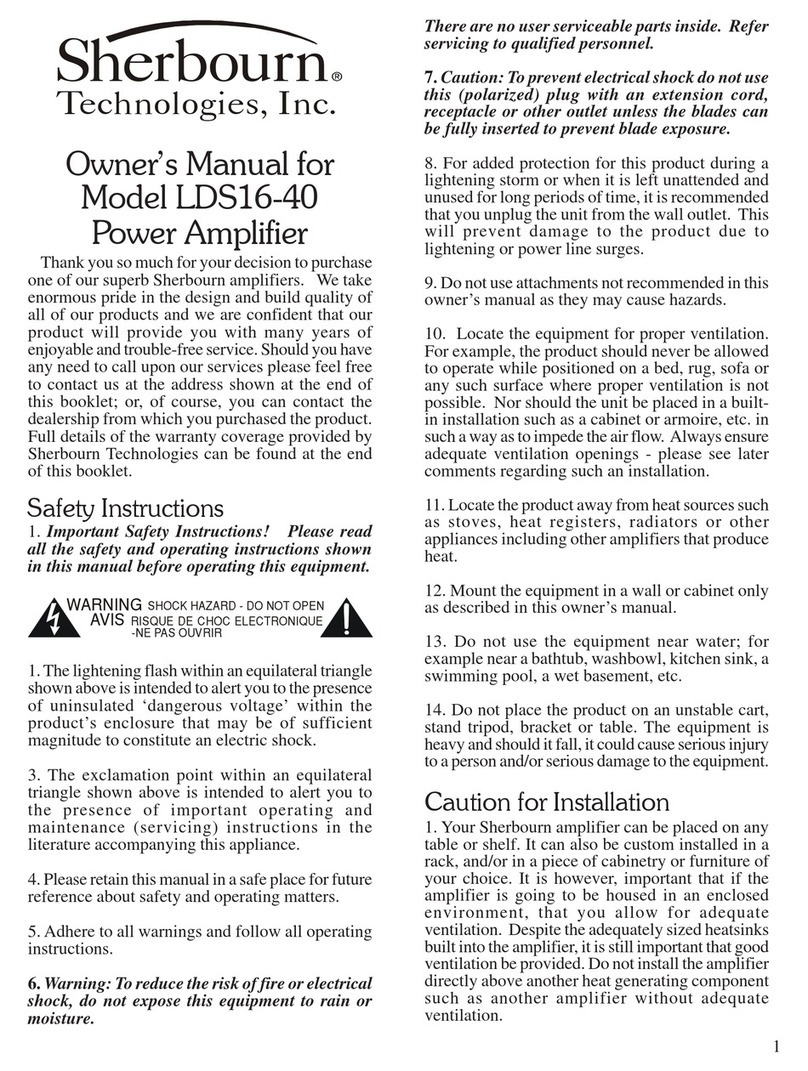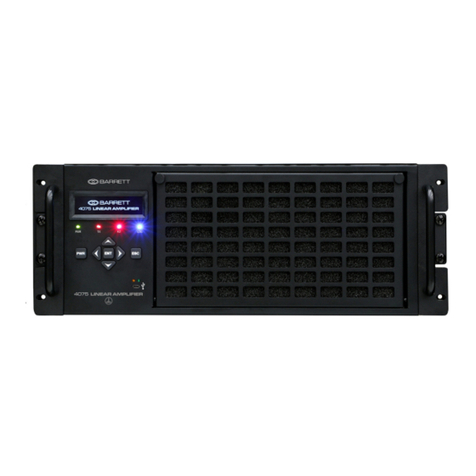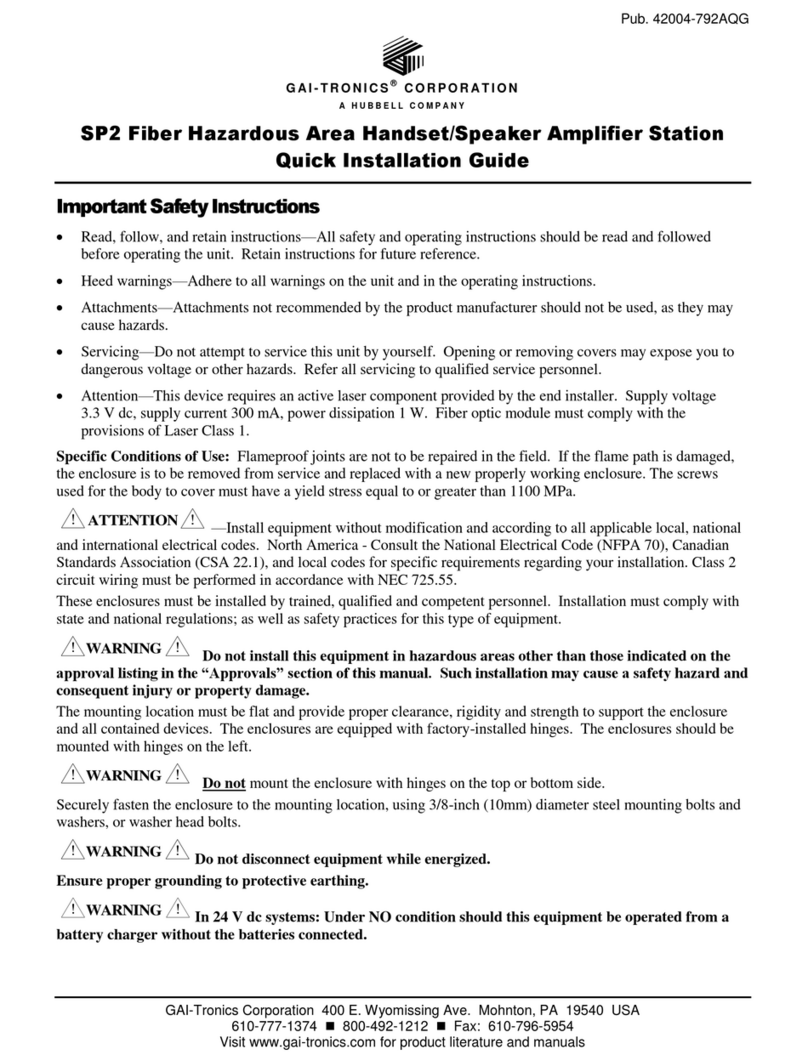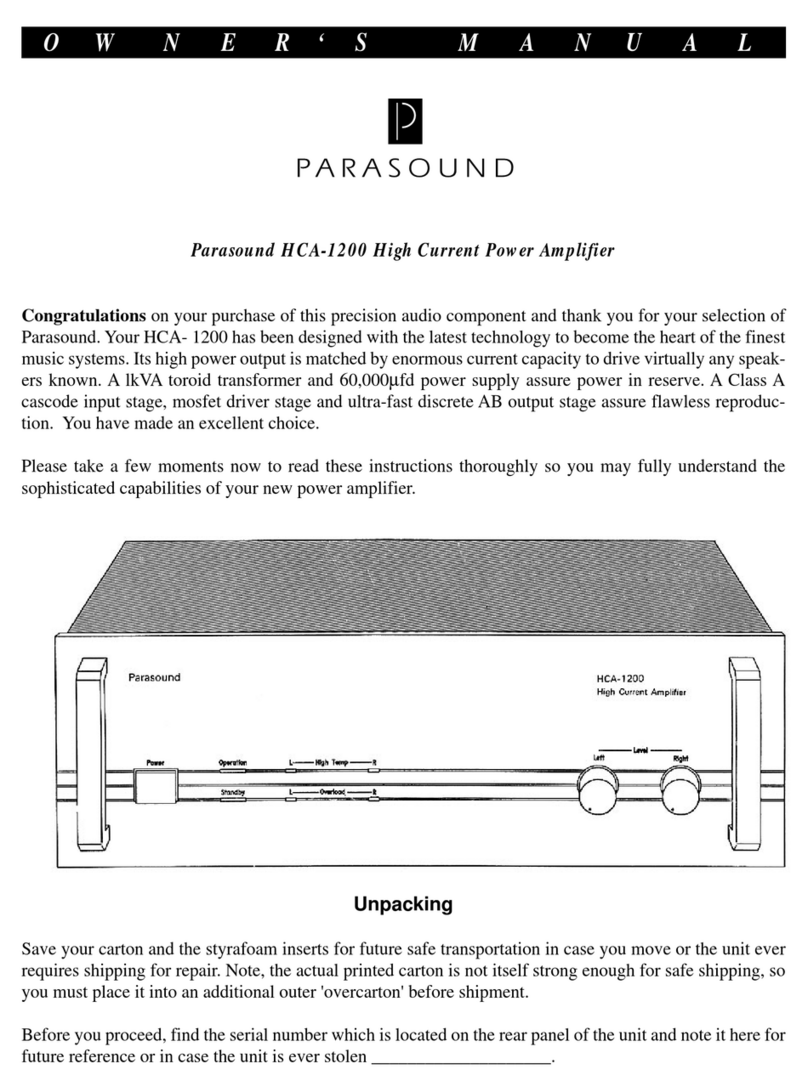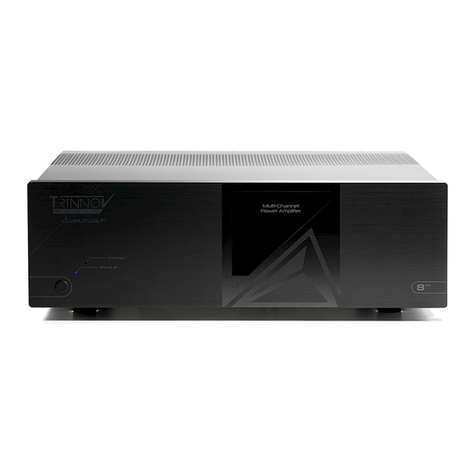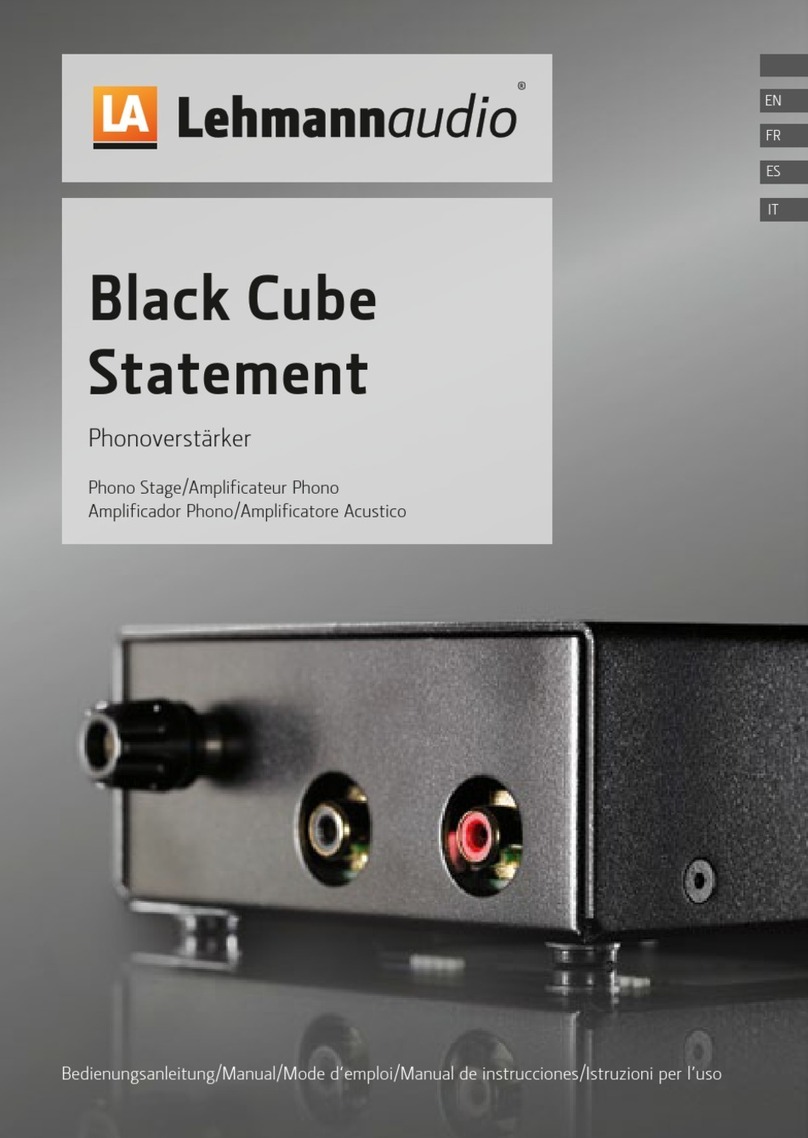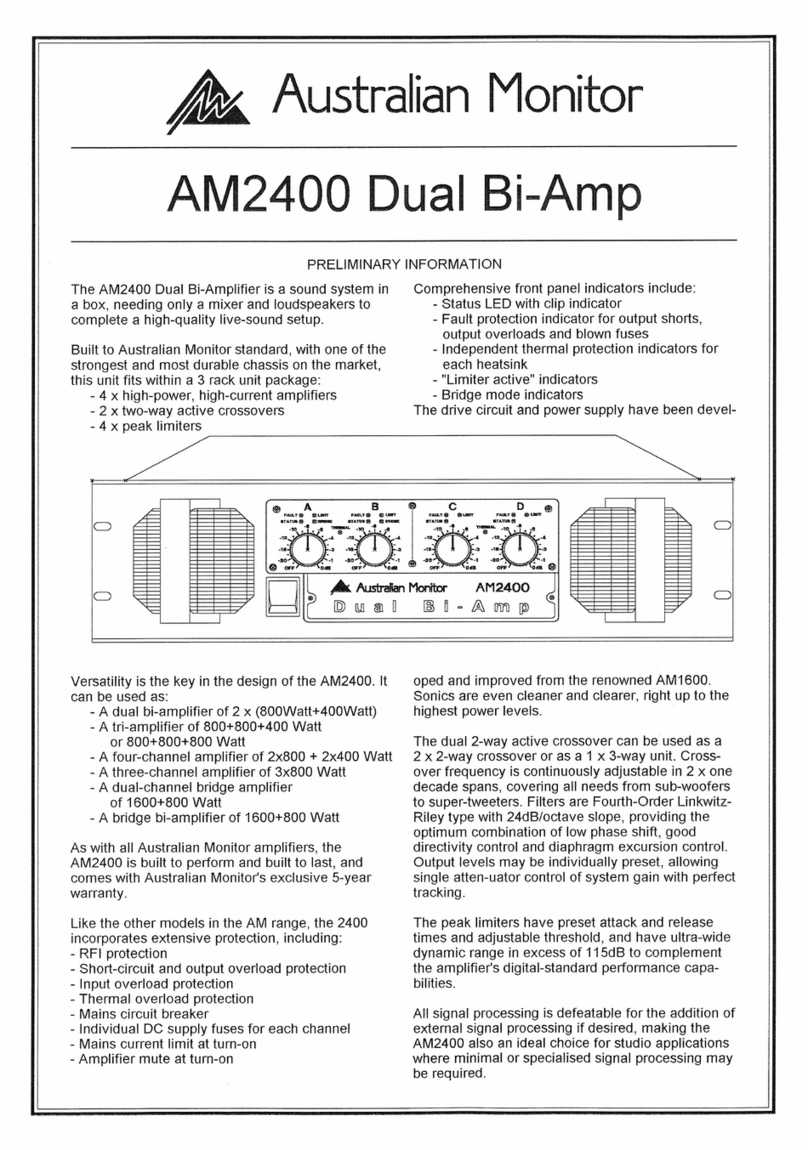Toner TBLE-1220 Series User manual

Instruction Manual
TBLE Series 1220 MHz
1
TBLE-1220 Series CATV Distribution Amplifiers
Model Bandwidth
TBLE-1220-35
5-42 MHz / 54-1220 MHz
5-85 MHz / 102-1220 MHz
5-204 MHz / 258-1220 MHz
TBLE1220 series CATV Line Extenders are broadband outdoor, with GaAs- Hybrid/ Power-Doubler technology
designed for the cable powered (30-90VAC) distribution systems where a high quality low noise figure amplifier is
necessary to amplify the signals in both the forward and return paths.
These are all designed with flat operational gain of 35 dB in the forward bandwidth and 25 dB in the reverse
bandwidth with a plug-in module. They have an input plug-in fixed attenuator and equalizer with plug-in inter-stage
equalization feature in the forward bandwidth, and a post stage plug-in equalization feature in the reverse bandwidth.
Reverse bandwidth features a fixed value attenuator pad at the input and at the output stages.
The unique design allows for seamless upgrade configurations from 85/102 and 204/258 by simply exchanging
plug-in diplex filter sets, thereby future-proofing upstream bandwidth requirements.
These amplifiers are remote powered, 30-90 VAC over coaxial network.
FEATURES
•Fully meets the requirements of DOCSIS 3.1, system split
•Downstream frequency bandwidth extends to 1220 MHz,
•Multiple diplex filter frequency split options,
•GaAs-FET Push Pull for high output levels with low distortions,
•JXP style plug-in controls,
•RFI housing,
•SCTE compliant F type connectors,
•Surge protection on all ports,
•Diecast aluminum housing for heat dissipation.
•Field-replaceable filter kits with multiple diplex filter frequency split options offer seamless upgrade

Instruction Manual
TBLE Series 1220 MHz
2
SPECIFICATIONS
Parameter Notes Forward GaAs-FET
Push Pull
Reverse Units
Bandwidth
54/102/258 to 1220
5 to 42/85/204
MHz
Min Full Gain
35 25
dB
Flatness +/-1.2 +/-1 dB
Return Loss, IN / OUT
-16 -16
dB
RF Test Points IN / OUT -20 -20 dB
Gain Control, variable
0-20 (input) 0-20 (output)
dB
Slope Control, variable
0-20 (input)
---
dB
Fixed Equalizers
0 to 26 with 1dB steps (midstage) ---
dB
Forward Distortions, 79 channels:
42dBmV Flat Output
CTB
on ch78
-63
---
dBc
CSO
on ch78
-66
--- dBc
Xmod
on ch2
-60
---
dBc
Forward Distortions, 79 channels:
12dB interstage slope
(54-1000 MHz),ref 32/44dBmV
CTB
on ch78
-67
---
dBc
CSO
on ch78
-70
--- dBc
Xmod
on ch2
-63
---
dBc
Reverse Distortions, 4 ch
52dBmV flat output
3rd on T10
T8+T9-T7
---
-68
dBc
2nd on T9
T7+12MHz
---
-65
dBc
Xmod on T10
T7, T8, T9, T10
---
-64
dBc
Noise Figure
7 7 dB
Fwd Group Delay:
55.25-58.83MHz
max.35
---
nsec
Rev Group Delay:
41-42MHz
---
max.30
nsec
Hum Modulation
-70
---
dB
RFI Isolation
5-1000MHz
-100
---
dB
Surge Withstand IN / OUT
IEEE C62.41-1991 Category
B3, Combination Wave 6KV,
3KA
AC Input
Only from Input
30-90
VAC
Power Consumption
8.0
Watts
Temperature
-40 to 130° F (-40 to +55° C)
Environmental Protection Painted housing with stainless
bushings & hardware
Weight 1.6 kgs / 3.6 lbs
Water Immersion
15psi for 10 seconds @ 20°C

Instruction Manual
TBLE Series 1220 MHz
3
BLOCK DIAGRAM
REMEMBER TO REPLACE COVER AFTER ADJUSTING. COVER MUST BE IN PLACE FOR CE,
SAFETY AND PROTECTION.
NO SERVICEABLE PARTS INSIDE. REFER SERVICING TO QUALIFIED SERVICE PERSONNEL.
WARNING: TO PREVENT SHOCK HAZARD, DO NOT EXPOSE THIS UNIT TO RAIN OR MOISTURE.
THIS APPARATUS SHALL NOT BE EXPOSED TO DRIPPING OR SPLASHING WATER AND NO OBJECTS FILLED WITH LIQUIDS, SUCH AS
VASES, SHALL BE PLACED ON THE APPARATUS.
WARNING: THIS PRODUCT IS A CLASS-I CONSTRUCTION. PLEASE ENSURE A CONNECTION TO POWER SOURCE INCLUDES A
PROTECTIVE EARTHING CONNECTION.

4
Basic Setup Procedure
Forward Level Setup:
1.
Before applying power to the amplifier make sure that the input level to the amplifier is not too high, or
damage to the amplifier might occur. To be on the safe side, installing highest available value input pad is
recommended before powering the amplifier.
2.
Before applying power to the amplifier, make sure that output connector is terminated.
3.
Install a 0dB input equalizer for minimum slope and install a 0dB plug in equalizer into the
mid- stage equalizer socket (this should be installed by the factory)
4.
Now apply power to the amplifier and measure the amplifier output level at the 20dB output test point. If
it is very low, then install a proper value input attenuator pad to increase the gain until the desired output
level is reached at the highest operating frequency. Remember that the level measured at the test point is
20dB lower than the signal level at the output port.
5.
Adjust the input equalizer value until the output level is flat across the full bandwidth. The input signal
level will now be flat too. Under this condition, this will be best CNR across the full bandwidth.
6.
Now install a plug-in equalizer into the mid-stage equalizer socket to get as close as possible to the
desired output signal slope. The desired slope is determined by your system design. Consult your
system planner or your system maps for this information.
7.
Make a final adjustment of the output slope and output level with the input attenuator and equalizer
values. Always adjust the gain control, then the slope control in that order.
8.
If you are having trouble obtaining the expected output levels, check the input test point to verify that the
levels are as expected at the input of the amplifier.
9.
Record the in/out operating levels and mid equalizer option used in this station on the lid label and
proceed to the reverse band level setup.
Reverse Level Setup:
1.
If the forward amplifier is not set up, stop and do it now. It is recommended that the forward amplifier be
set up first since its high gain requires extra precautions be taken before powering.
2.
A commercially available reverse sweep and balance test system is recommended for setting up the TBLE
reverse amplifier. With this test system the forward output test point will be used for a reverse signal
injection point, and you should start your set up at the first amplifier out from the node. Follow the
procedure offered in the test system manual.
3.
If you don't have a reverse sweep and balance test system, you will need two people to set up the reverse
band, and they will need to communicate with each other.
4.
The procedure is simply explained as follows:
a. Reverse signals are all combining to arrive at the node destination. Therefore, the signals should be
set up to have constant levels at each reverse amplifier input.
b. Constant input signal levels are achieved by injecting an (X) dBmV test signal into the reverse input
using the forward output 20dB test point. Adjust the reverse amplifier output gain and slope
controls to achieve the same (X) dBmV input signal level at the following amplifier (or node) input.
The person at the node reports the resulting levels to the person injecting and adjusting. This gives
a unity gain setup for each reverse span.
c. The person at the node does not have to move to the adjacent amp each time the setup person
moves to the next amp. This is because the system is being set up for unity gain.
d. Remember that the reverse test points and the injection point are 20dB directional couplers, so
your measured levels and injected levels should be accordingly adjusted.

5
About Filter Kits Replacement
-
After cutting the power of the device and replacing the diplexer modules, repeat the "Basic Setup Procedure"
-
If the power of the device cannot be cut off, first unplug the power socket of the device, then replace the
diplexers and repeat the "Basic Setup Procedure" as needs.
Optional Diplex
Filter Kits
Part
Description
TBLE-DPX42/54 Diplex Filter set (Stock)
5-42/54-1220 MHz (Stock from factory)
TBLE-DPX85/102 Diplex Filter set
Filter kit consisting of two diplex filter modules & one
return EQ JXP for 204/258 MHz frequency range
TBLE-DPX204/258 Diplex Filter set
Filter kit consisting of two diplex filter modules & one
return EQ JXP for 204/258 MHz frequency range
969 Horsham Road, Horsham, PA 19044
800-523-5947 | 215-675-2053
www.tonercable.com | [email protected]om
This manual suits for next models
1
Table of contents
Other Toner Amplifier manuals
